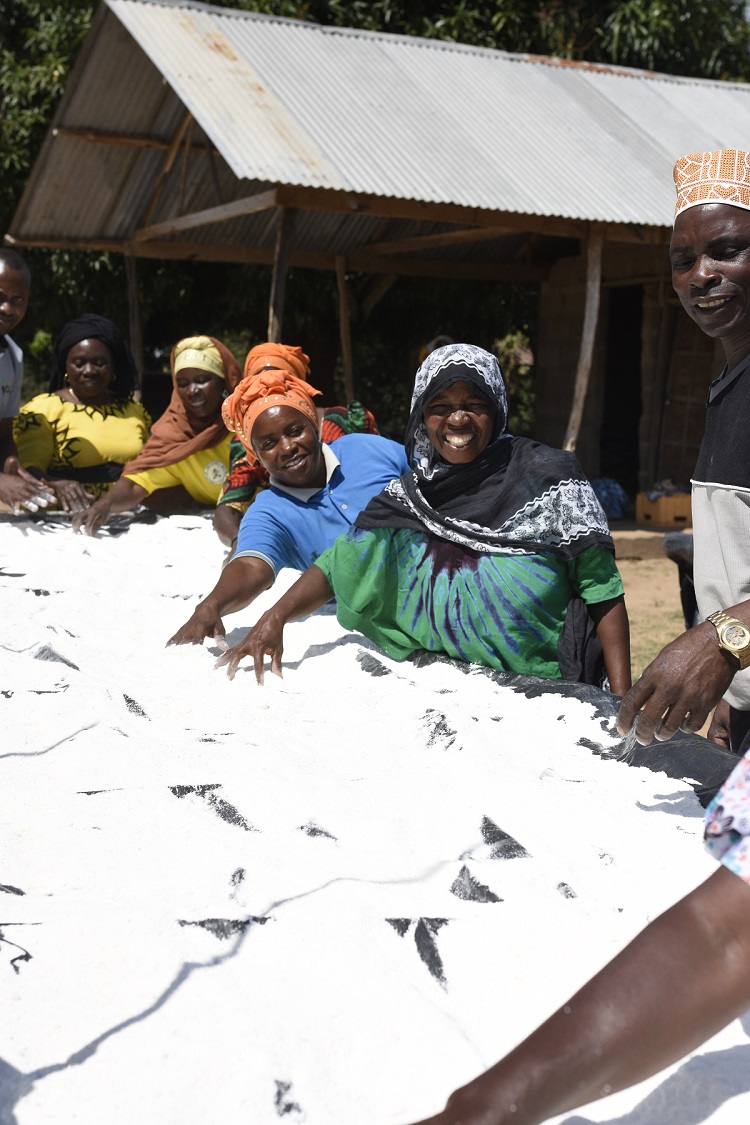‘Mobilizing’ just one cassava root takes an enormous amount of time, energy, logistics and hard work. Once harvested, this tropical root crop – an important staple food – needs to be processed quickly, for fresh cassava roots begin to deteriorate 72 hours after harvest.
From the field, the bulky roots are loaded onto trucks then transported to processing plants by roads which can be difficult to navigate. Other challenges include the need to increase yield and managing pests and diseases.
During its five years of operation, from 2014–2019, the CAVA2 project mobilized 2.37 million tonnes of roots, exceeding all targets. The project, whose aim was to improve the lives of smallholder farmers, successfully developed value chains in the five project countries of Nigeria, Ghana, Uganda, Tanzania and Malawi, enabling smallholder cassava farmers to access new markets for High Quality Cassava Flour, Starch, Ethanol, and a variety of improved traditional products.
Business models were tailored to each country, location and market context, and implementation plans were developed to enable both women and men to participate and benefit. CAVA2 was supported by the Bill & Melinda Gates Foundation, and led by Nigeria’s Federal University of Agriculture, Abeokuta (FUNAAB) and NRI.
Of the 2.37 million tonnes of cassava roots, more than 70% went to new value chains. There is strong evidence that smallholders benefitted from these markets as indicated by increases in farm and non-farm assets, such as farm tools, radios, televisions and electric fans. Smallholders adopted productivity-enhancing technologies to enable them to increase their yields by 58–154% in response to these market opportunities. CAVA2 aimed to generate $177 million of gross income from sales of cassava roots from smallholder farmers and sales of products by cassava processors.
At the end of the project, smallholder gross income was $369.1 million and the number of direct beneficiaries amounted to 153,738, of whom 43% were female.
Innovations and improvements in processing technology design and manufacture were important drivers in value chain development, especially where they contributed to reduced fuel usage and enhanced quality assurance. In Nigeria, for example, current drying technologies are significantly better than those at the start of the predecessor project, CAVA1: fuel usage reduced from 374 to 65 litres/tonne of dried product; throughput increased from approximately 100kg/hour to around 330kg/hour of dried product and efficiency increased from 11% to 55%.
Overall, 87 flash dryers were installed across Nigeria, Malawi, Tanzania and Uganda. In Ghana, where investments focussed on the use of bin dryers, 21 were installed. Sun-drying using smallholder farmer-supplied roots remained important for producing high-quality products for diverse markets. In Malawi, Uganda and Tanzania, sun-dried cassava was supplied to the new markets for livestock feed and breweries. 1,270 community processing groups and many of the 569 small and medium-scale enterprises engaged in the project were involved in sun drying.
Important project lessons learned include: modifying approaches to specific contexts, flexibility and the ability to innovate during implementation, accessing wide-ranging technical expertise, the need for an enabling environment for policy and finance, availability of business planning and management support, and the importance of quality management.
It is hoped the benefits from this project will continue to increase; with additional investment, the aim would be to scale up and scale out CAVA initiatives to become well established and sustainable industries with more than one million beneficiaries. There are also opportunities for the modernization of traditional cassava value chains in ways that protect the livelihoods of women who currently depend on them.
To find out more about:

